Images of Oaxaca
This is my second post on Oaxaca city which my sister Katrina and I explored from Jan 18-24. This post covers random street scenes which we came across plus a bit about the economic problems facing the state.
Kat took the follow photo, which appeared to be some kind of model shoot. But what’s with the no socks? Is that the fashion now?
Most houses have little balconies facing the street so you can look out and get some fresh air. They are covered by steel bars for security. Photo KatSzy.
We saw lots of statues of large women. Not sure what they were for but we had fun with them.
Kid playing in a fountain in the main square, the zocalo.
Oaxacan cheese is called quesillo. It is cheap and good. We bought some from this dour looking woman at the market.
A cobbler hard at work in his shop.
Death and skeletons are big in Oaxaca.
I’m not afraid of heights but you would not catch me up there.
No comment. Photo KatSzy.
Street scene from above.
The Cathedral of Our Lady of the Assumption (Spanish: Catedral Metropolitana de Nuestra Señora de la Asunción). It is the seat of the Roman Catholic Archdiocese of Antequera, Oaxaca. Its construction began in 1535 and it was consecrated in 1733.
Video of the cathedral.
A view of the inside. Pretty impressive. No wonder people felt in awe of the Almighty.
There are a million shoe stores in Mexico. I guess people walk a a lot. This one was in the market.
A guy moving chairs in a restaurant.
We were walking down a random street when I thought I heard English over a loudspeaker. We went to investigate and it turned out to be a series of sidewalk book stalls. One vendor was selling CDs to learn English. We happened to catch the teacher repeating the phrase “He is watching movies.” But the pronunciation was a little off. I had tears in my eyes from laughing so hard. Video KatSzy.
Oaxaca is easily the most interesting state in Mexico that I have been to so far. The landscape, indigenous population, food, art and beaches make it a definite go-to destination in Mexico. Forget Cancun, Oaxaca is where you want to go.
It’s estimated that Oaxaca contains 8,431 species of flora and 4,543 species of fauna, which represent approximately 50% of the nation’s total. Oaxaca is home to 33% of Mexico’s total indigenous population. Of the 3.5 million people residing in the region over a third speak an indigenous language such as Zapoteco, Mixteco, Chatino, Trique, and Mixe. As a group, Oaxacans speak over fourteen indigenous languages and ninety dialects. Indigenous traditions are still a prominent part of life today as manifested by traditional dress, cuisine, festivities, and community structure.
Oaxaca is home to many ancient archeological ruins – including the ancient city of Monte Alban and the religious center of Mitla– that have been named “World Heritage Sites” by UNESCO.
Currently, indigenous and mestizo entrepreneurs are involved in trout farms and the production of coffee, chocolate, mushrooms, traditional medicines, fruit trees, honey, woven tapestries, embroidery, traditional clothing, shawls, fine artisan paper, eco-tourism, among others.
But there is a severe lack of opportunities for economic development. Oaxaca ranks as the second poorest state in Mexico, after Chiapas. Over 76% of its residents live in extreme poverty, lacking basic necessities such as food, water, education and healthcare. The average per capita income is the lowest in the country at $3400 USD. This amounts to about $9.31 a day, or just about $1 per hour working for nine hours a day, 365 days a year. Its human development index (HDI) is 0.72, comparable to Africa and India.
Oaxaca also suffers from a lack of decent education opportunities. 22% of the population is illiterate and 45% have not completed a high school education. Approximately 90% of all indigenous teachers do not meet the requirements of an essential academic background. In rural areas, the availability of education beyond elementary school ranges from inadequate to nonexistent, with an increasing number of dropouts after age 11. Compared to a national average of 26%, only 5% of Oaxaca’s indigenous population reaches a middle or higher education.
Healthcare issues and political fragmentation also trouble the poor of Oaxaca.
You see plenty of evidence of this poverty on the streets if Oaxaca. This girl was playing harmonica for tips while also evidently babysitting her little sister.
This group of indigenous women were on a hunger strike. They want status as internally displaced citizens after an alleged massacre of their husbands in 2010.
This kid was drawing on the streets every day. His parents were nearby selling trinkets. School? I don’t think so. Photo KatSzy.
We watched this woman selling balloons in the main square. She was there every day, all day. I’m not sure how many balloons she sold but $10/day would seem about right.
This old woman had no shoes but was still sitting every day selling snacks. One day was quite cold and we saw she had plastic bags on her feet. So sad. Photo KatSzy.
This woman was selling fabric on the street. Just sitting there for hours making a few dollars. It’s tough to watch knowing how good your life is but as I’ve said many times: Life ain’t fair. We did what we could: gave money to those asking, or buying their products, but its only a drop in the bucket of course. Photo KatSzy.
Many blind people play musical instruments on the street for spare change. This guy was playing a squeezebox. Video KatSzy.
This guy was playing guitar and we thought he sounded like a Mexican Tom Waits. Video KatSzy.
Well that wraps it up for Oaxaca. I just crossed into Guerrero state and need to get caught up on my recent photos. Below is my current location. Stay tuned!

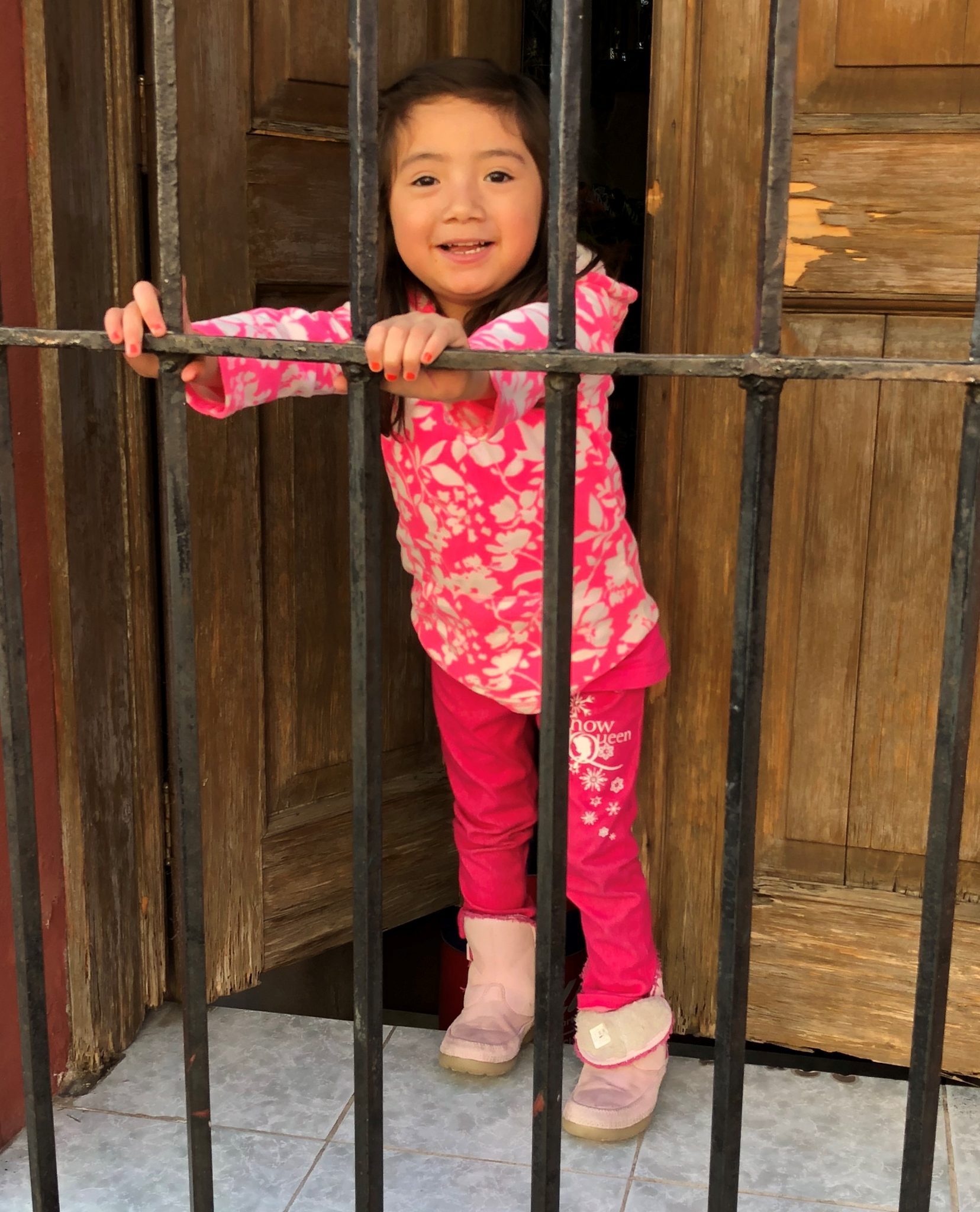
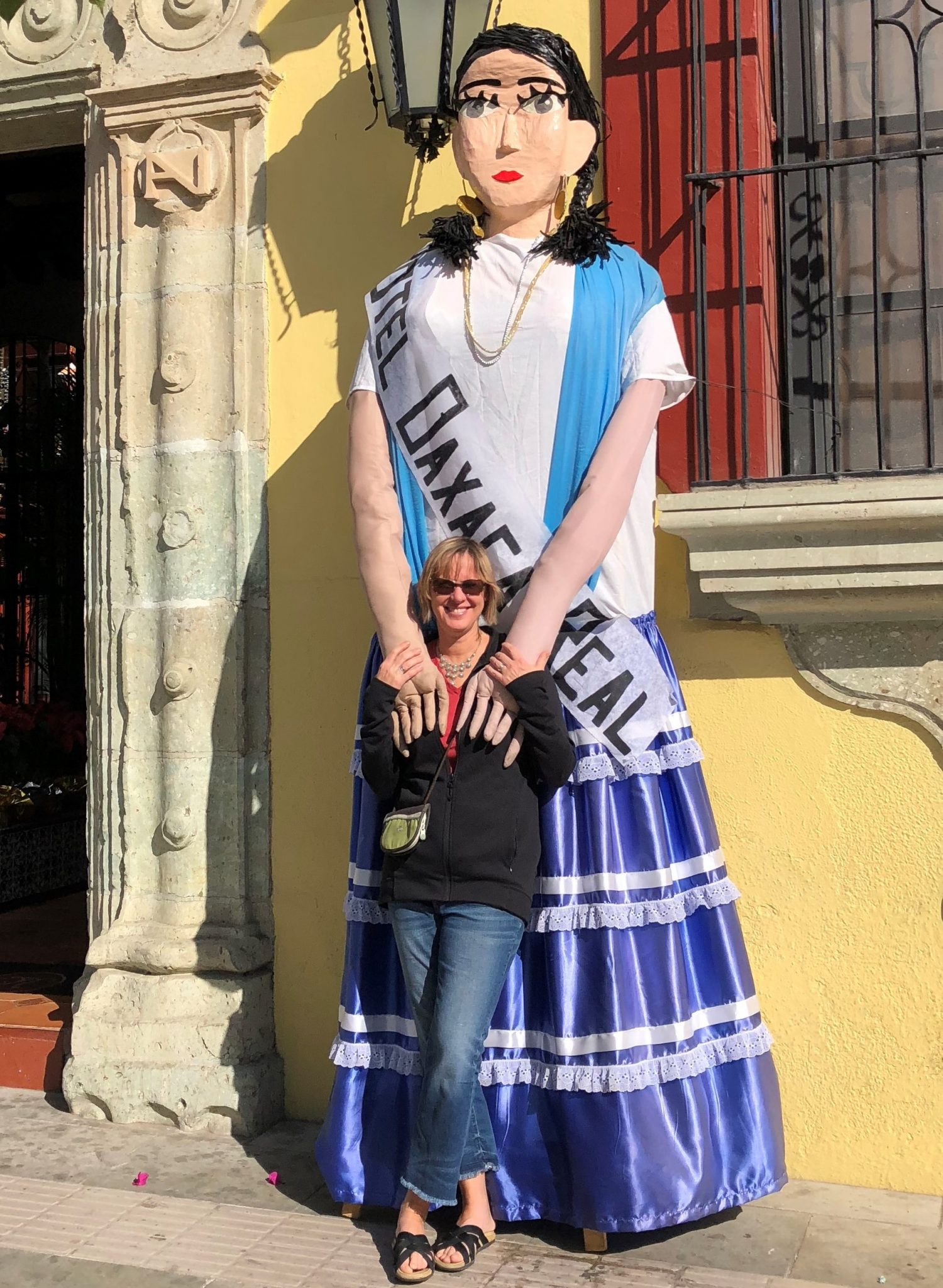
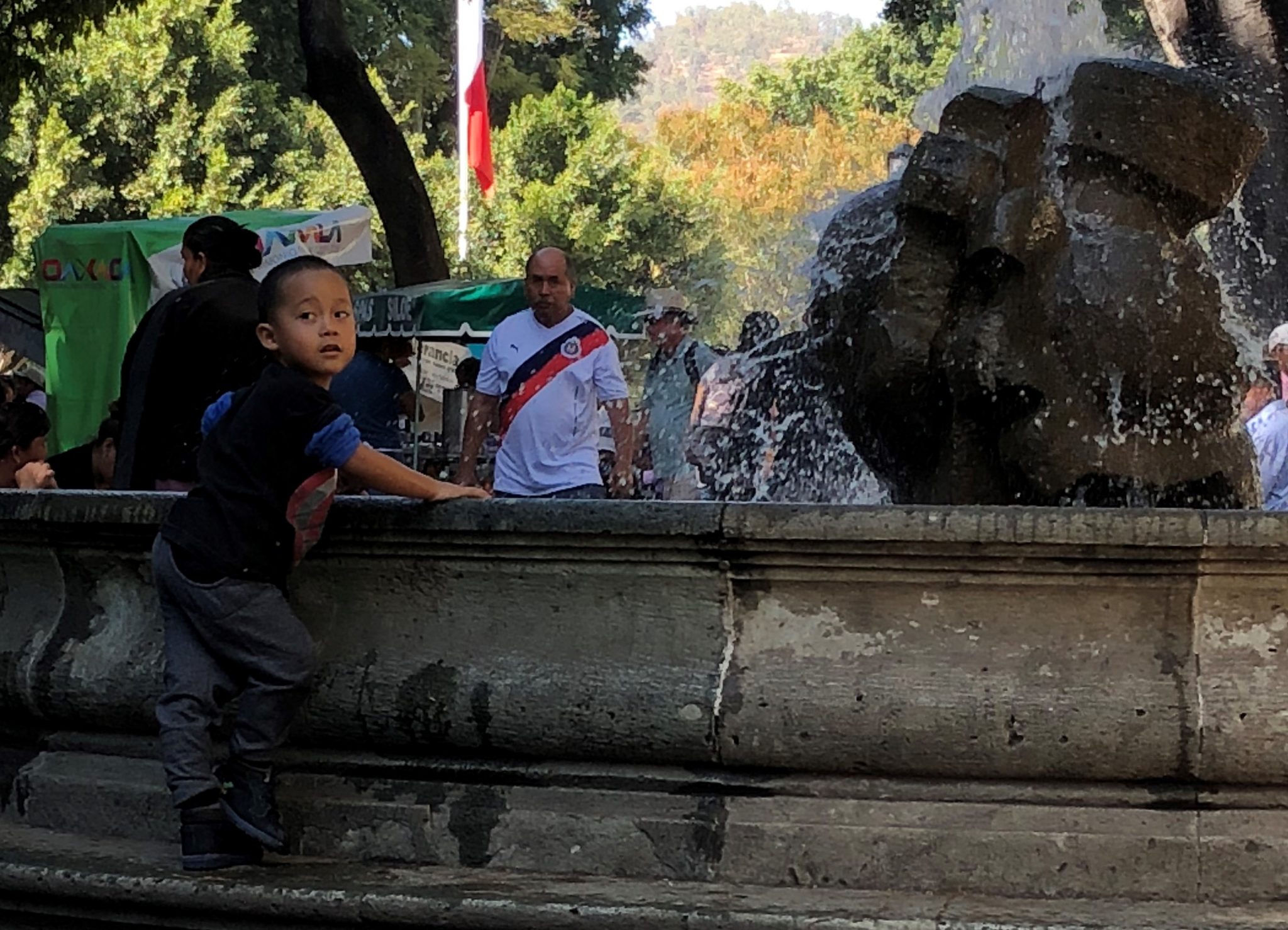



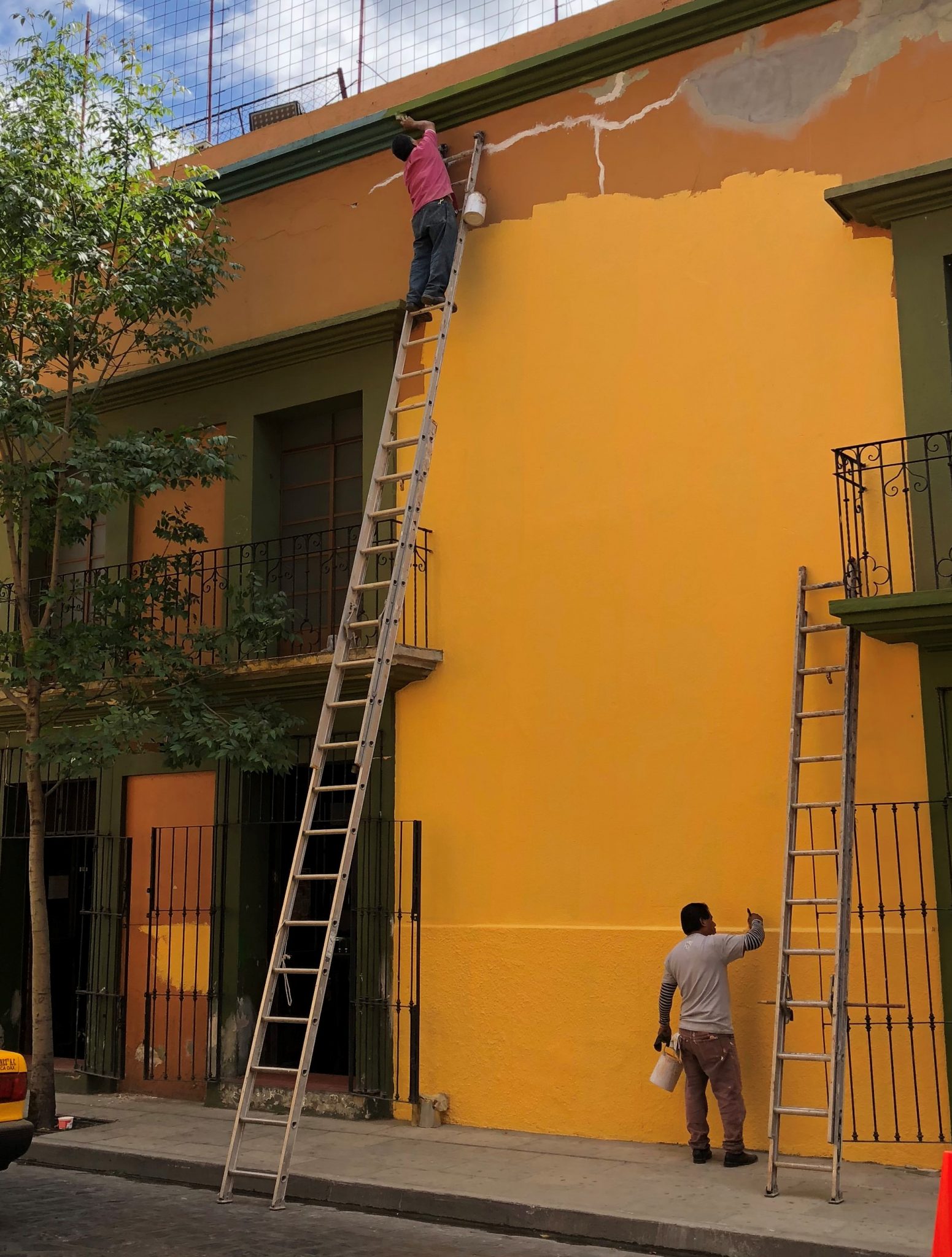

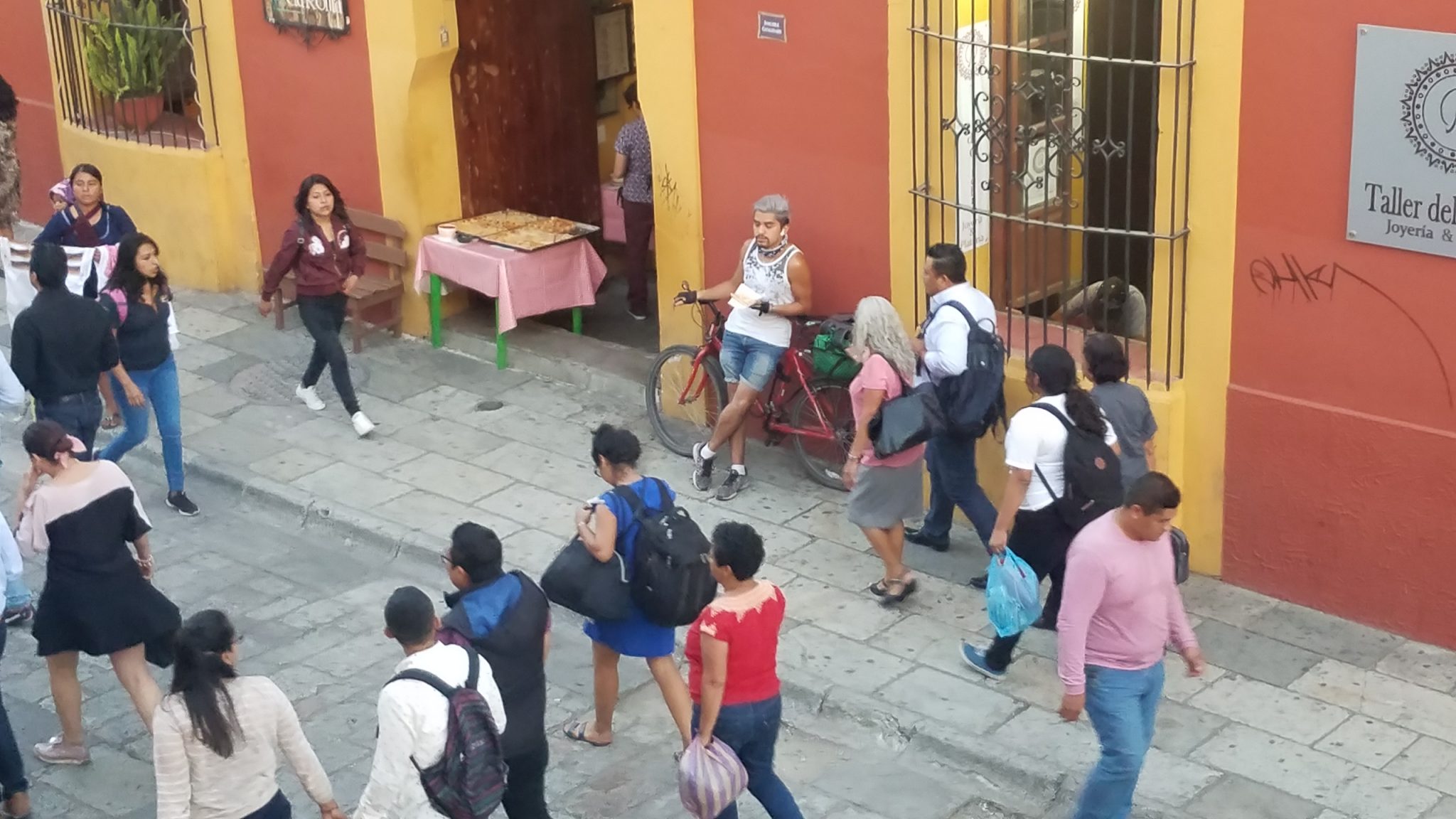
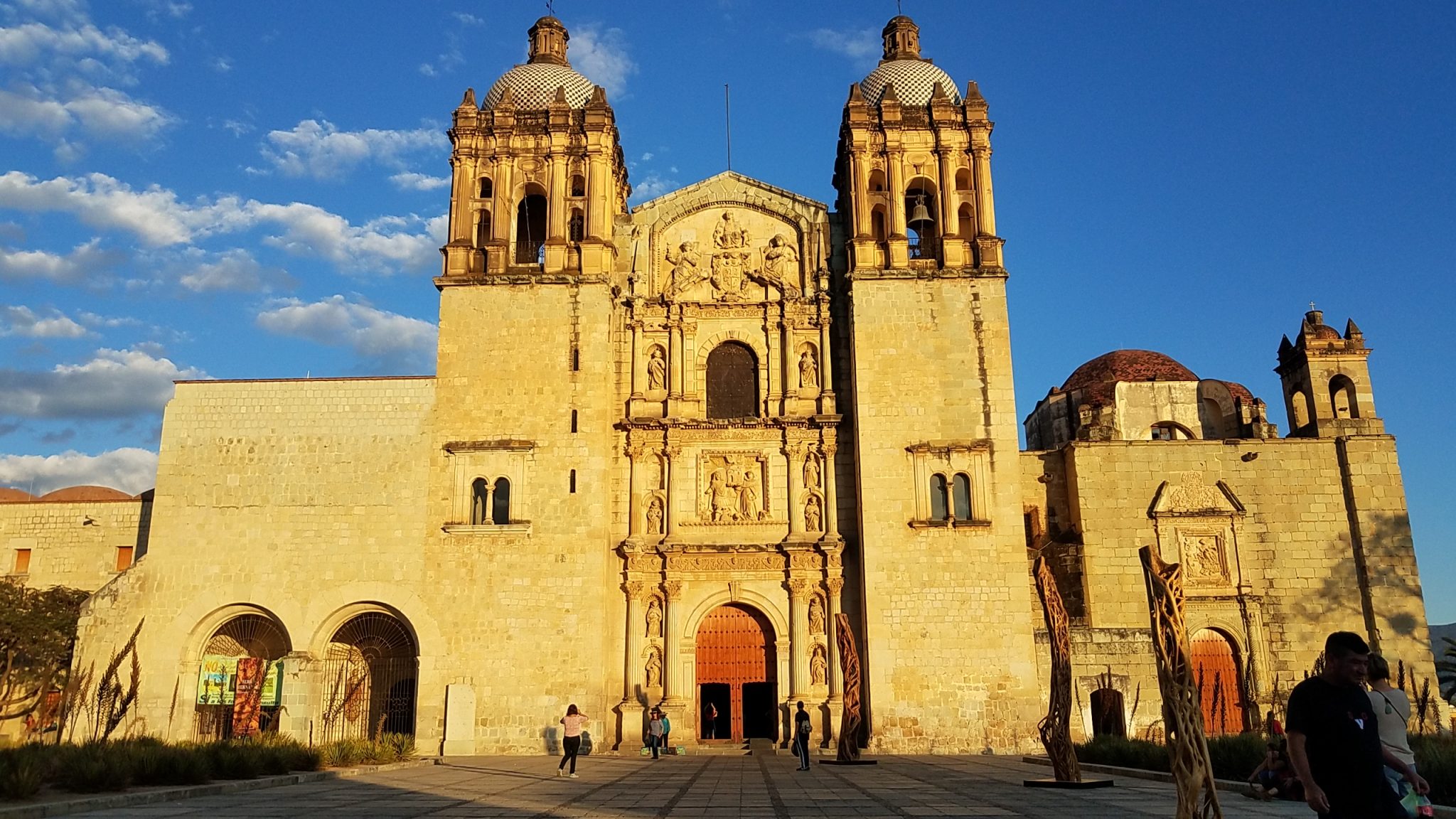
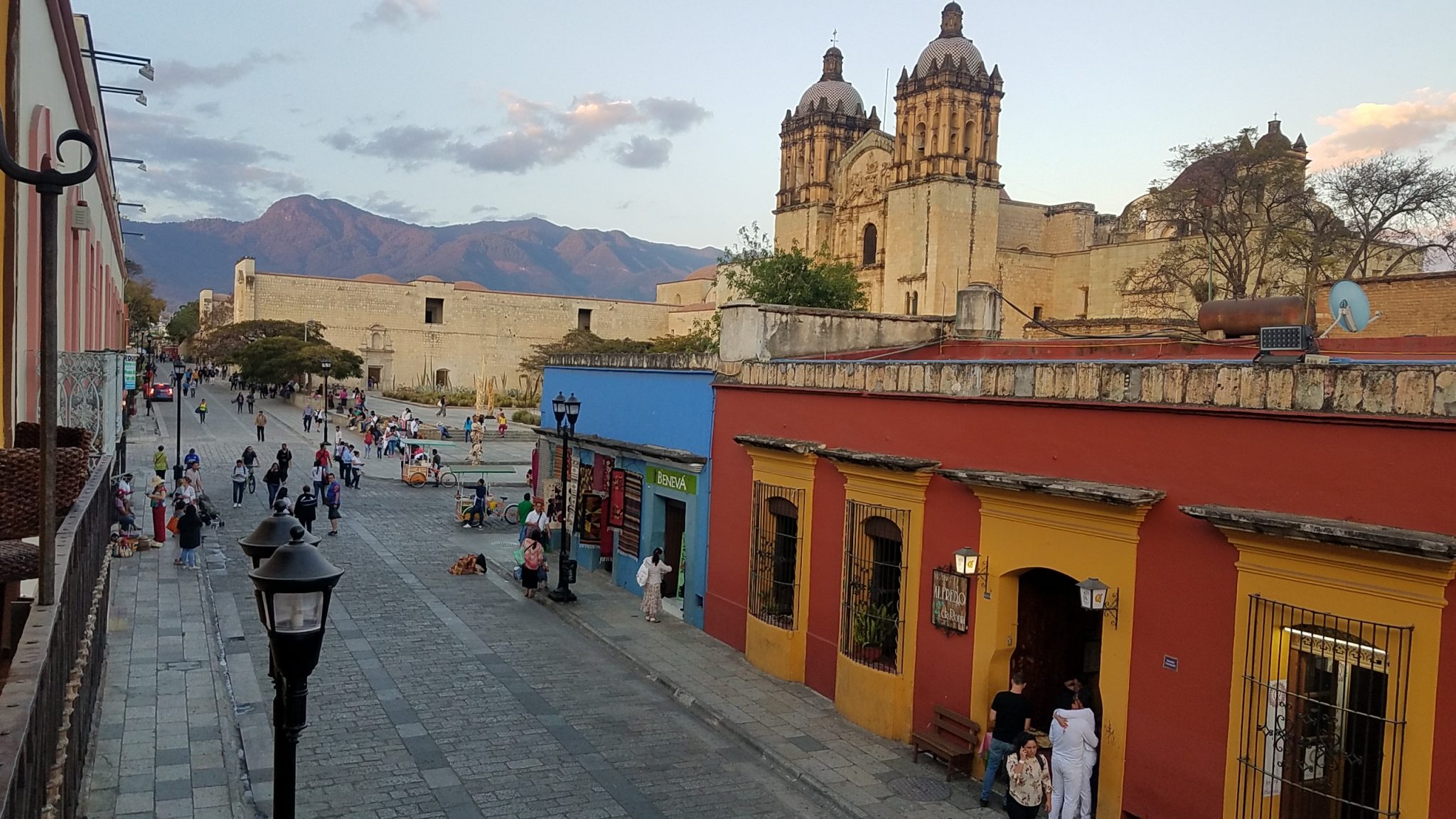
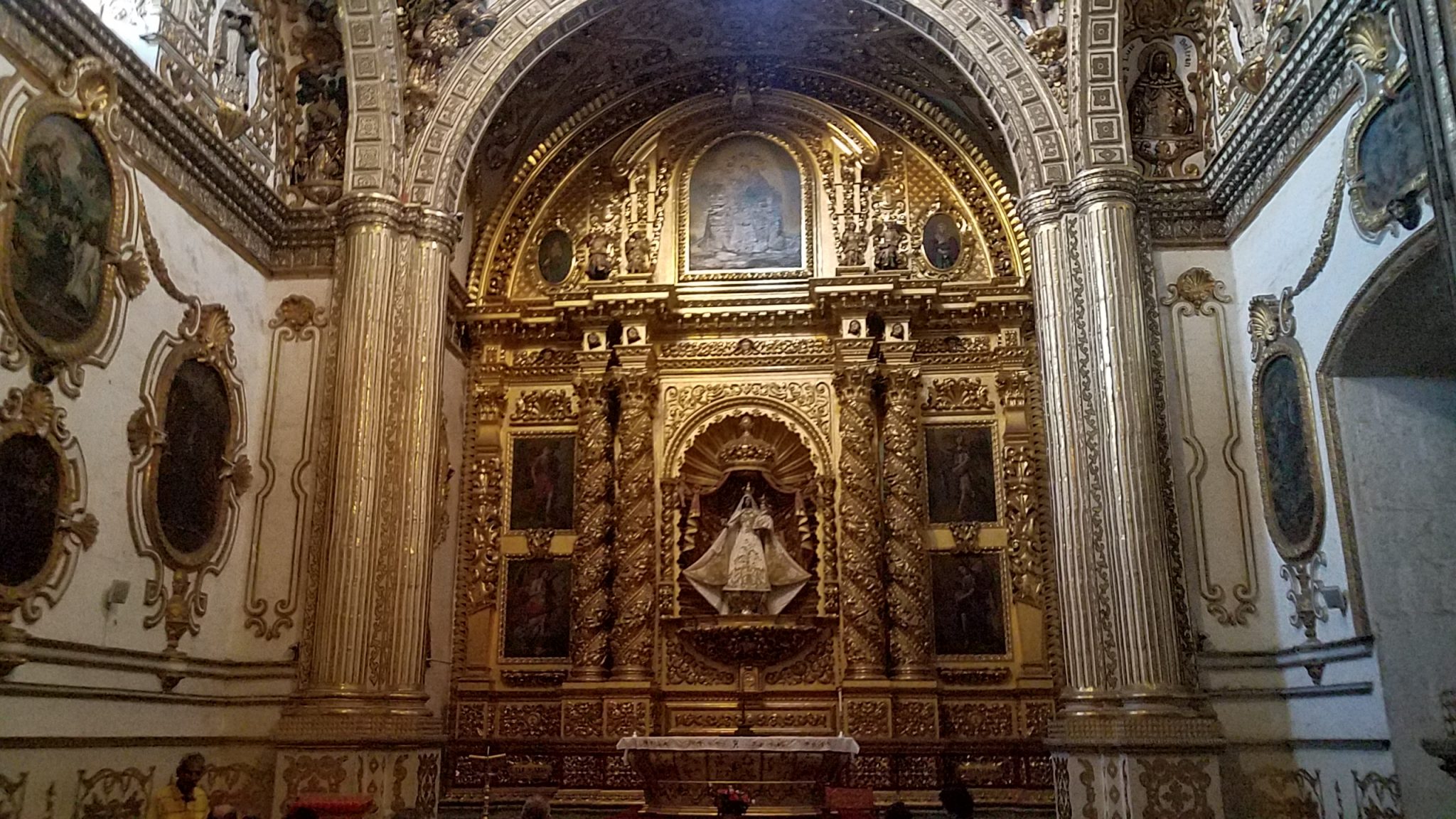
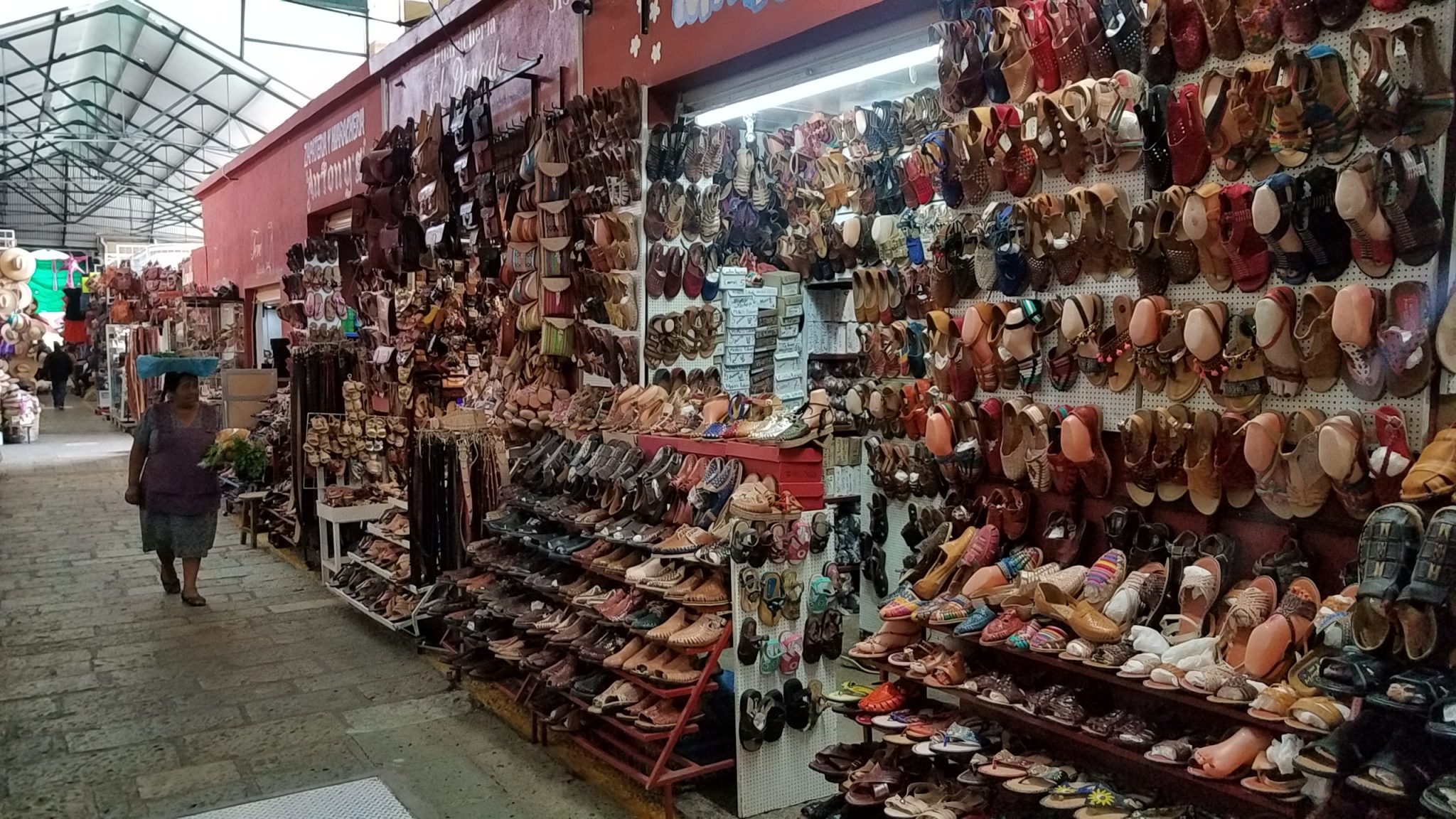
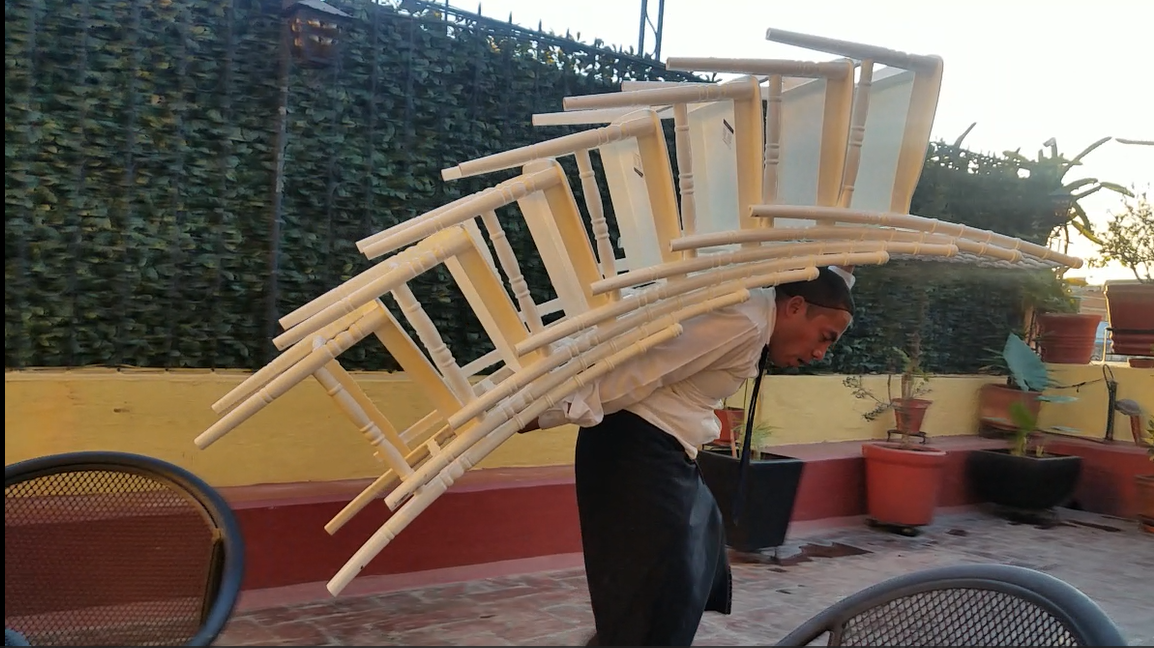
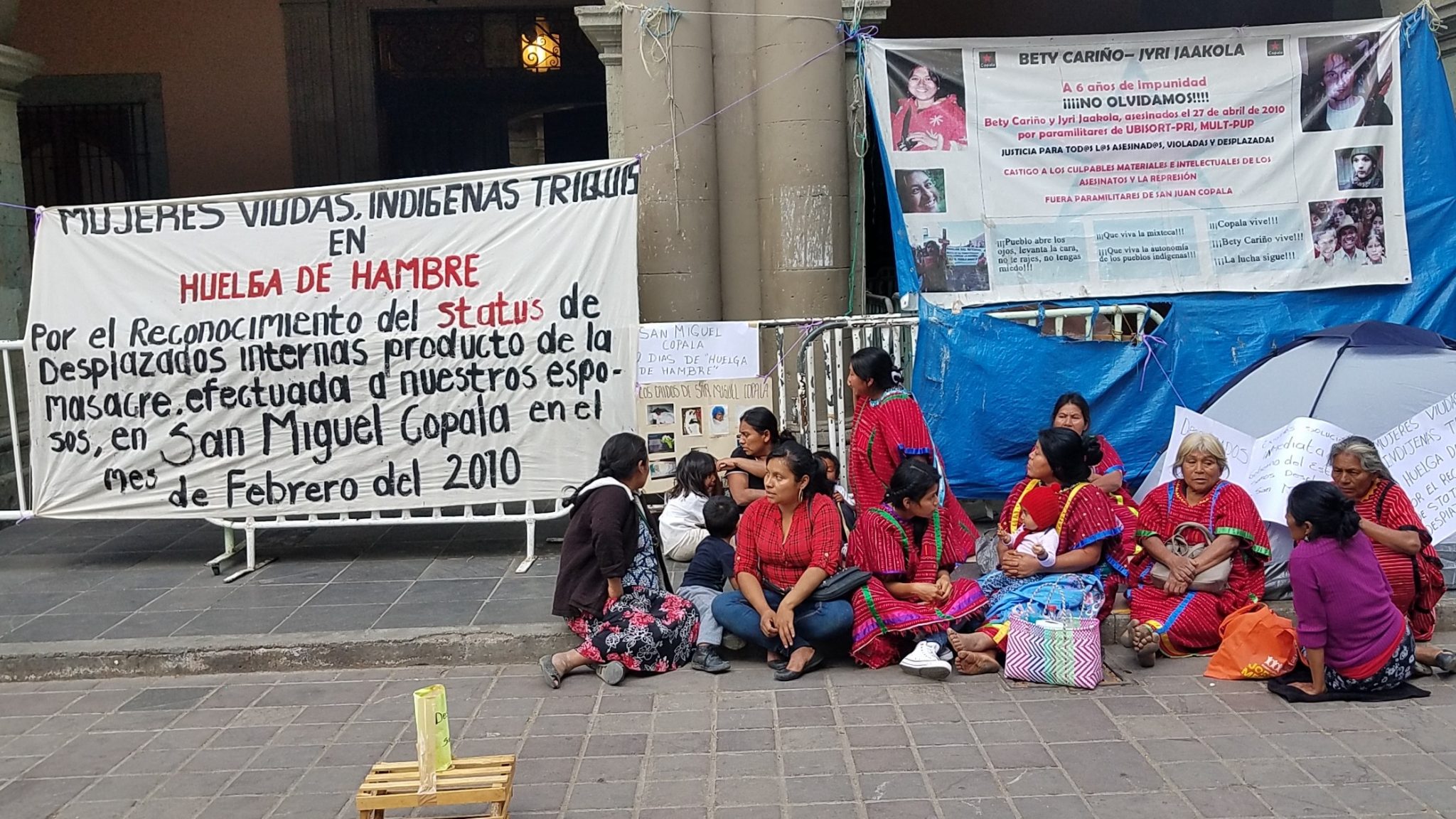
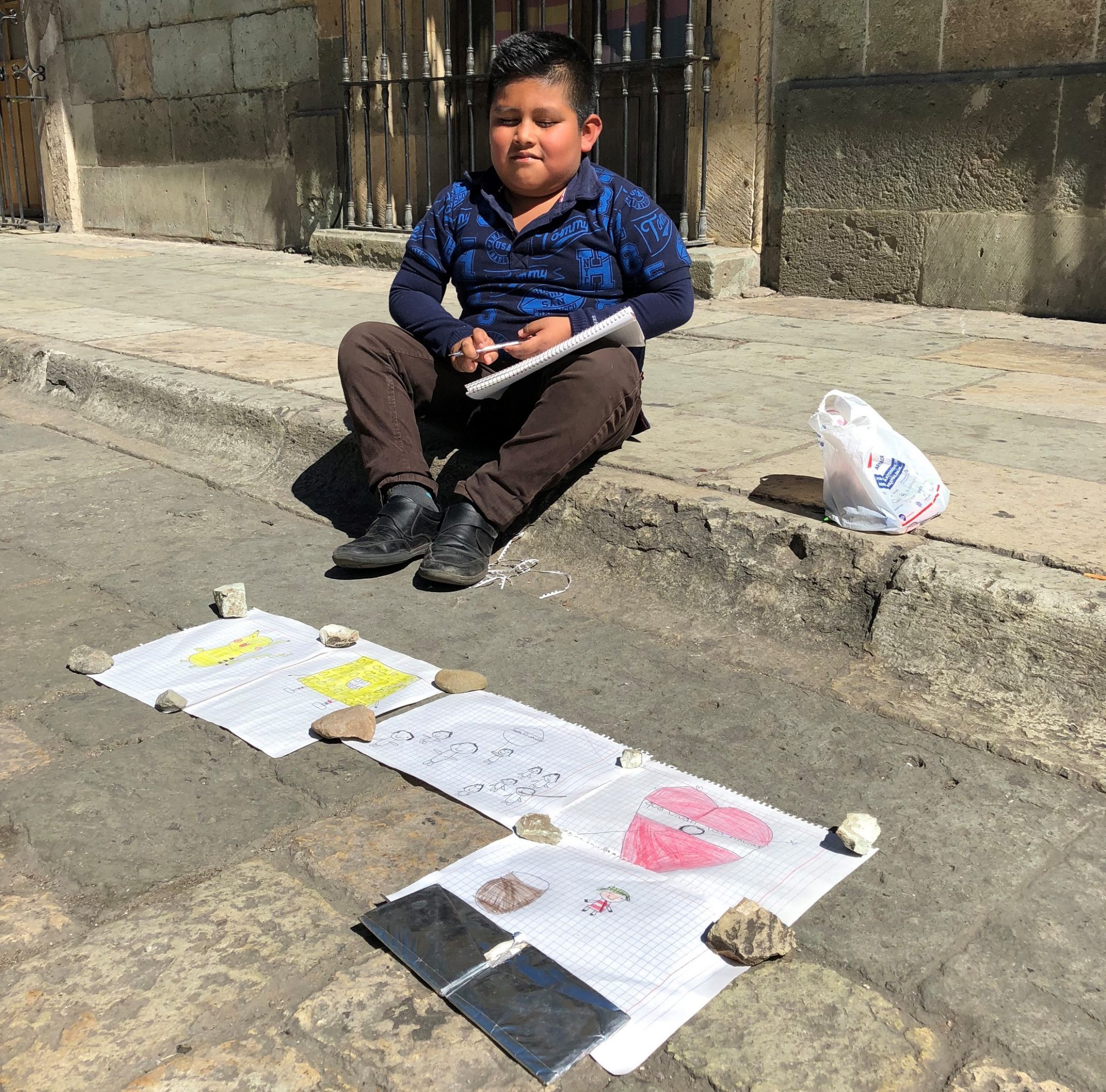
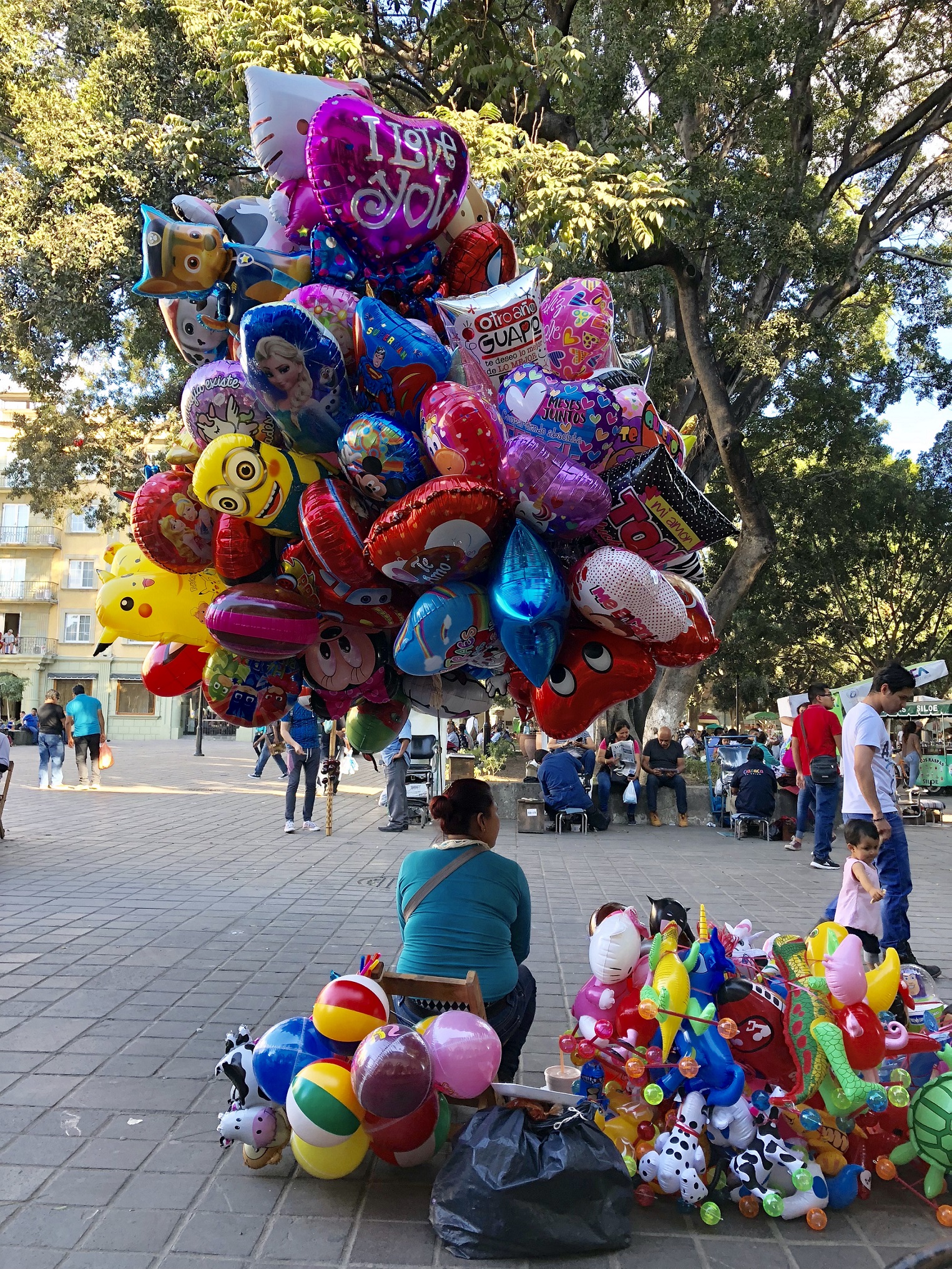
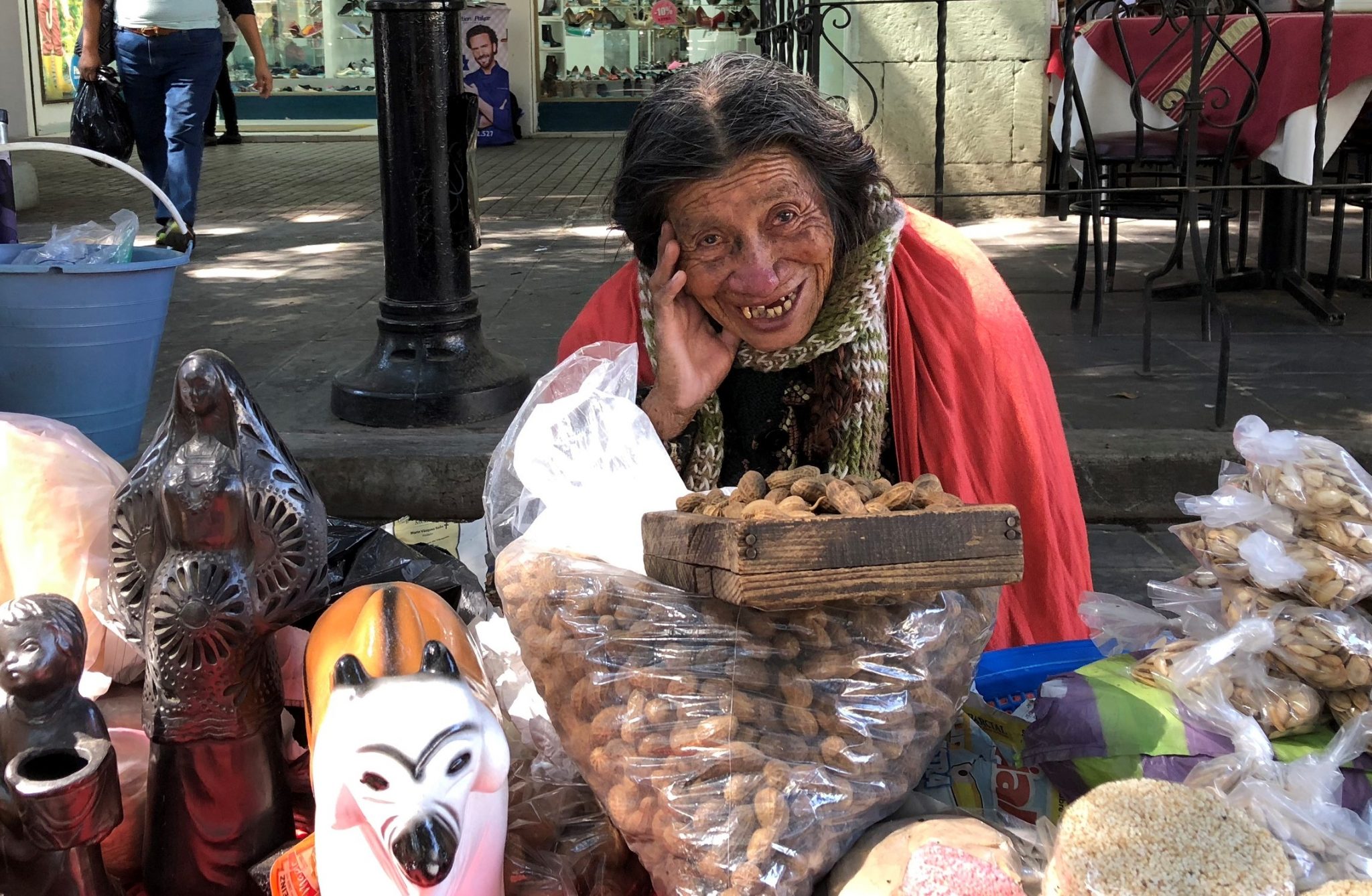

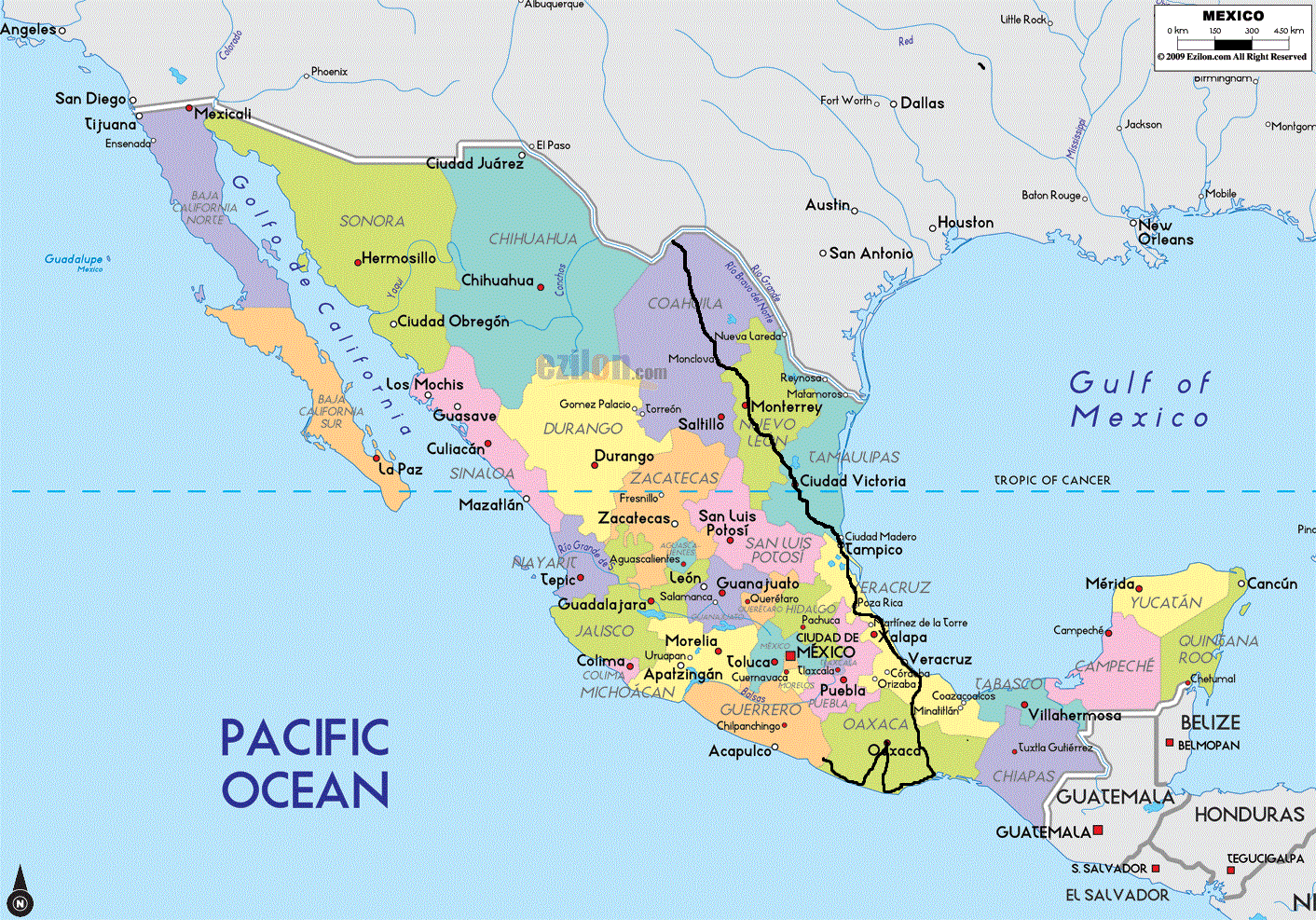
Did you notice the name “Jaakola” on one of the signs of the women who were hunger striking? I wonder if that’s a Finn.
I suppose not. But I haven’t noticed many double-a spellings in Spanish.
I hadn’t noticed that Ben. But I googled the name Jyri Jaakola and indeed he was a Finnish human rights activist who was killed in Oaxaca in 2010 (the sign claims he was assassinated by paramilitaries). There is even a wikipedia page on him:
https://en.wikipedia.org/wiki/Jyri_Jaakkola
His death remains unsolved.
Oaxaca here we come. Be careful out there.
Prob shoulda gone with Trin…maybe I’ll meet u in Australia…..